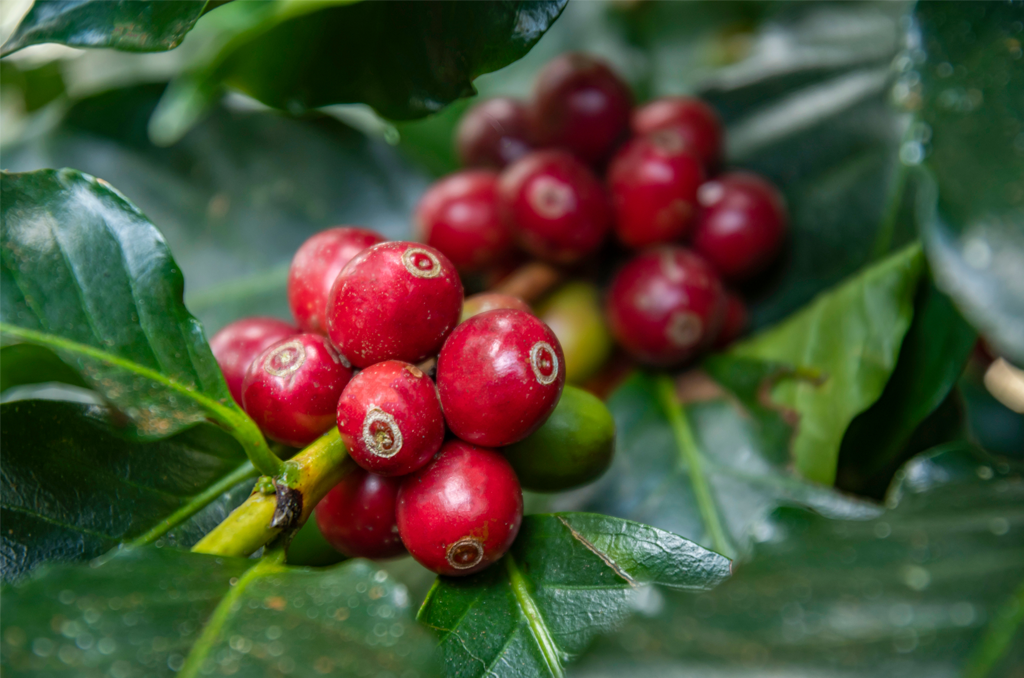Coffee Berries – Courtesy: Shutterstock – Image by Aedka Studio
Florida has been known as a major player in the citrus farming sector for decades, namely because of its production of orange juice and citrus products. In fact, in most seasons, Florida produces more than 90 percent of the country’s supply of orange juice and produces more than 70 percent of the United States’ supply of citrus.
But it may soon have a competitor in the form of caffeine—coffee beans.
According to a group of scientists from the University of Florida, the Sunshine State may soon be in a prime position to grow coffee due to climate change.
“We are in a climate where it is almost perfect to grow coffee,” said University of Florida graduate assistant Emily Pappo.
The only thing keeping the climate from “almost perfect” and “perfect” is the slight chance that the state gets too cold and can harm the growing process. But with increasing median temperatures, scientists have reason to believe the time can be sooner than later.
“As we start to experience climate change starting to create more warmer days and maybe less frost events, it might become more possible for the coffee plants to thrive here in the Florida climate,” Pappo explained. “That opens up a lot of really great opportunities for coffee production in this part of the United States.”
Florida has never grown commercial coffee trees; in fact, coffee can only be commercially grown in California and Hawaii.
Pappo is playing an integral part in the movement that wants to bring the coffee crop to Florida.
“Knowing how coffee’s root system and how the coffee plant itself responds to different climate conditions is going to be really important for knowing how the coffee is going to do here in Florida,” she added.
Her team is currently testing the feasibility of growing the crop in the state and is in the middle of growing the first research crop of coffee in the state’s history.
The effort is not being carried out on a solo mission. University of Florida Engineering members are also helping out the agriculture team by using imaging technology to help the team get a closer look at the growing process in the soil.
The engineering team created clear plastic tubes with cameras and slid them into the soil next to the crop to take pictures of the crop’s roots to see how it handles extreme conditions that Florida faces, such as drought and frost.
“This will collect data over hundreds of wavelengths, outside of our visible range. Using all that information, we can learn more about the materials and the chemical compositions of the soil and the roots that we are imaging. We can learn more about their interactions and their changes over time,” said engineering professor Alina Zare via Fox 13 News.
For years the United States has heavily relied on South American countries to export the caffeinated good for consumption. According to a 2019 report, the United States accounted for 19.4 percent of the world’s coffee imports, the highest in the world.
If Florida is able to grow the crop, it would grant the state access to funding for the projects through agriculture grants and would surely save the country money on exports for the beans.
Like what you see? Click here for more stories about everything Florida. Florida Insider is dedicated to educating, entertaining, and informing its readers about everything in Florida. Easy to read content at the palm of your hands and covering the stories that matter.

William is the Managing Editor at FloridaInsider.com. His years of experience in journalism, broadcasting and multimedia include roles as a Writer and Web Producer. He graduated from Florida International University with a Bachelor of Science and Communication.

